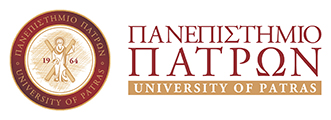Co-ordinator: George Panayiotakis
Lecturers: Harry Delis, Dimitris Kardamakis, Gerasimos Messaris, George Panayiotakis, Pola Platoni, Spyros Skiadopoulos, Despoina Spyropoulou
Aim and Objectives:
The aim of the course is to introduce participants to the mechanism of radiation damage on a cellular level and the associated radiobiology. The linear non-threshold model will be explained as the accepted fundamental basis of radiation protection. The international framework of radiation protection, its content and the process for its development will be presented. Radiation protection methodologies for the patients, the staff and the public will be presented, including the methofologies for the calculation of radiation protection barriers.
Course Content:
- Introduction. History of the development of radiation protection.
- Radiobiology. Biological effects of ionizing radiation. Cellular effects. Determinist effects. Probabilistic effects. The Linear Non-Threshold (LNT) model.
- The framework of radiation protection. Development of the international consensus for radiation protection. International organization that develop the international framework of radiation protection (UNSCEAR, ICRP, IAEA). International and European Legislation.
- Radiation Protection Principles. Justification, Optimisation, Dose limits. ALARA. Radiation Protection Framework.
- Personnel Monitoring. Classification of radiation workers. Occupational dose monitoring. Extremities and eye monitoring. Monitoring equipment and techniques.
- Radiation Protection in Radiology Patient and Personnel Radiation protection in Diagnostic and Interventional Radiology. Radioprotection equipment. X-ray room design and shielding. Radiation Protection outside the x-ray room. Sensitive groups of patients (pregnant and paediatric patients). Diagnostic Reference Levels (DRLs) in Radiology.
- Radiation Protection in Nuclear Medicine. Patient and Personnel radiation protection in diagnostic and therapeutic Nuclear Medicine. Radionuclide Laboratory radiation protection requirements. Radiation protection in the PET department. Environmental monitoring. Radioactive waste management. Radioactive contamination and decontamination. Diagnostic Reference Levels (DRLs) in Nuclear Medicine.
- Radiation Protection in Radiotherapy. Radiation protection in external radiotherapy and brachytherapy. Radiation protection equipment. Treatment room design, shielding and controls. Environmental monitoring.
- Accidental and unintended exposures. Definition of accidental and unintended exposures. Reporting systems. Patient follow up after overexposures.
Suggested Textbooks
- J. Shapiro. Radiation Protection: A Guide for Scientists, Regulators and Physicians, Harvard University Press, 2002.
- Radiation Protection and Safety of Radiation Sources: International Basic Safety Standards, GSR-3, IAEA, 2014.
- International Atomic Energy Agency. Radiation Protection and Safety in Medical Uses of Ionizing Radiation, SSG-46, IAEA, 2018.
- International Commission on Radiological Protection The 2007 Recommendations of the. International Commission on Radiological Protection, ICRP 103, ICRP, 2008.
- National Council on Radiation Protection and Measurements. Structural Shielding Design for Medical X-Ray Imaging Facilities, NCRP-147, NCRP, 2004
- J. Malone, F. Zölzer, G. Meskens, C. Skourou . Ethics for Radiation Protection in Medicine (Series in Medical Physics and Biomedical Engineering). CRC Press, 2018.
- Lecture notes
Grading policy
Projects and written examinations.

